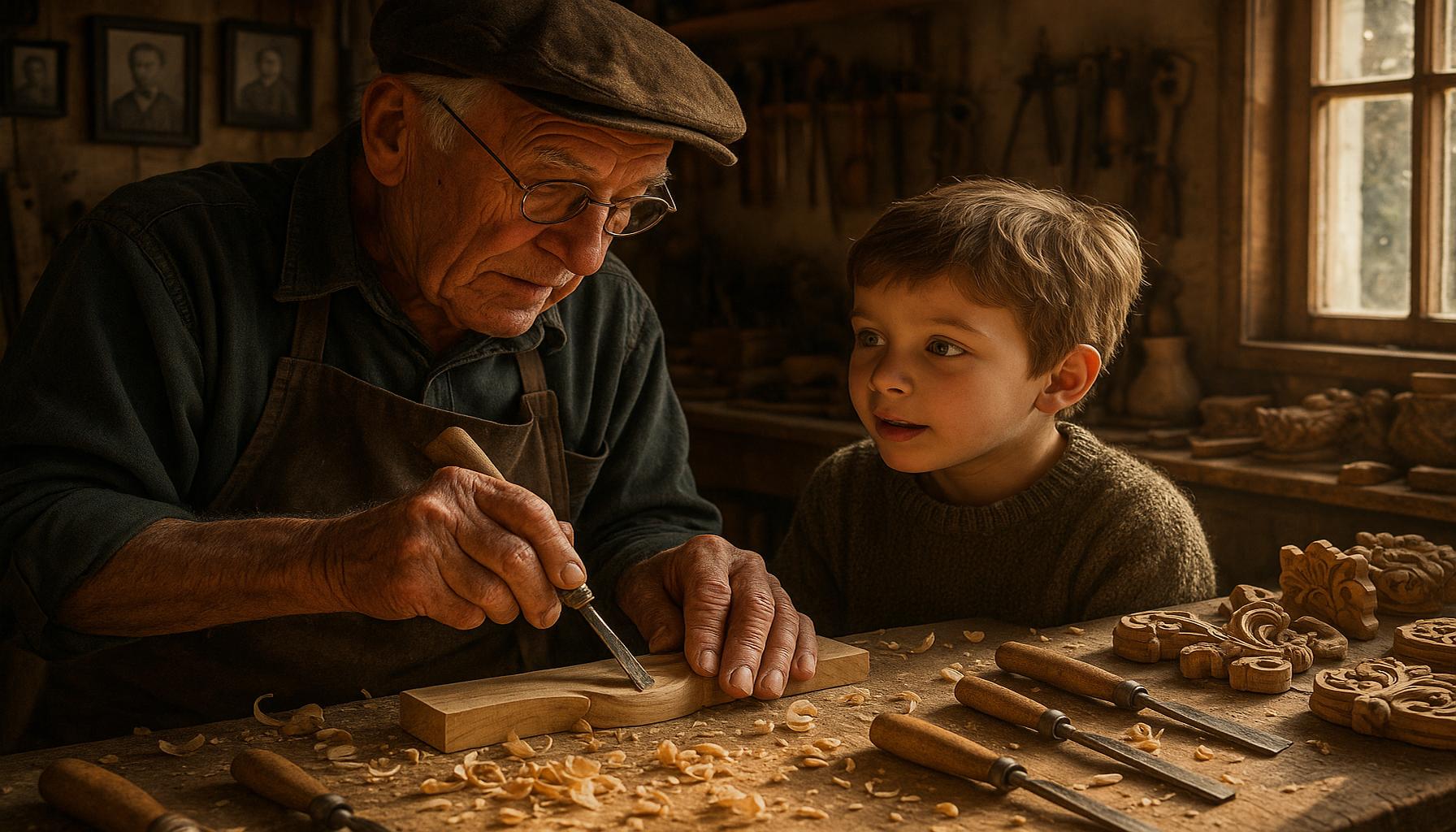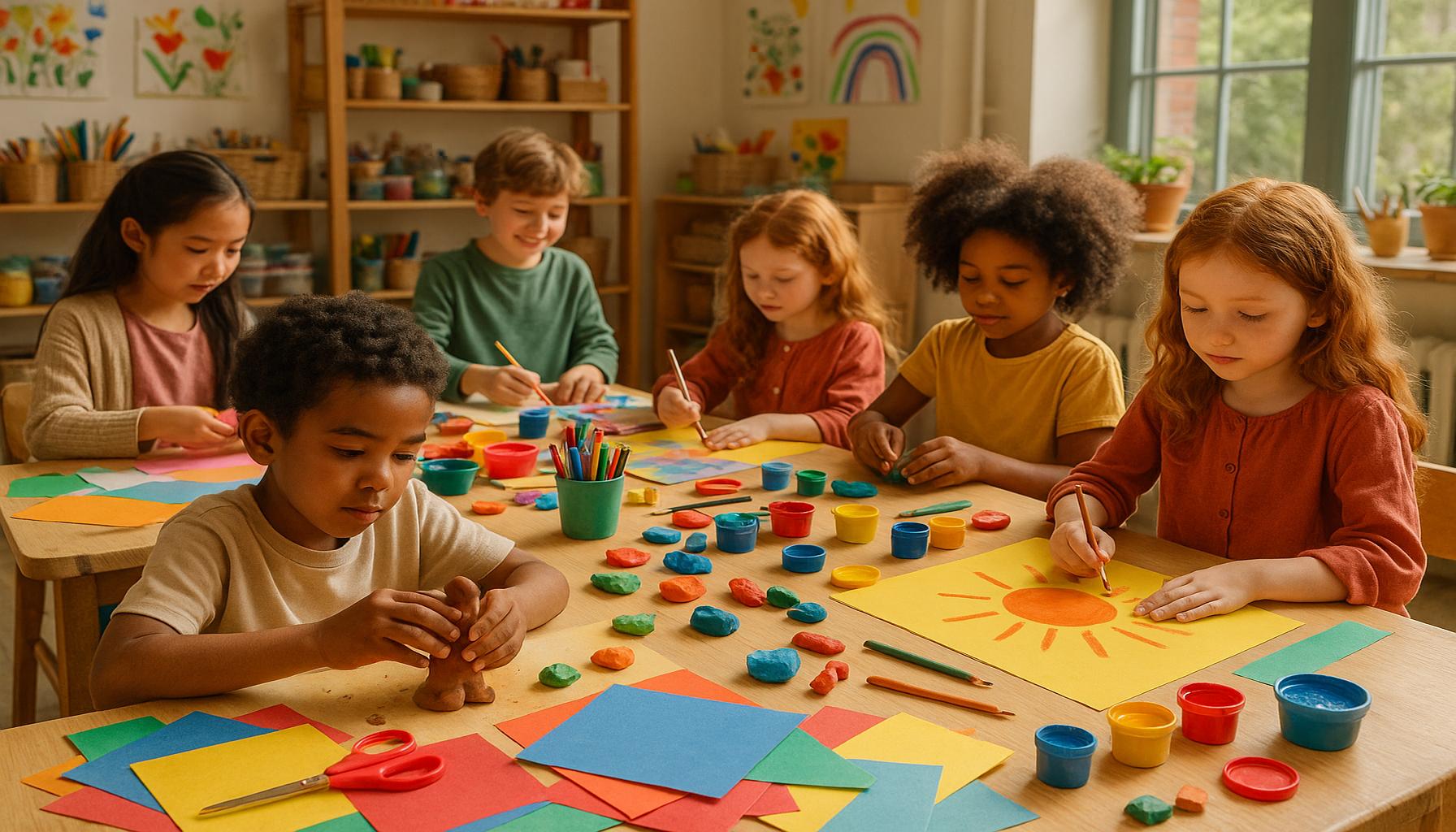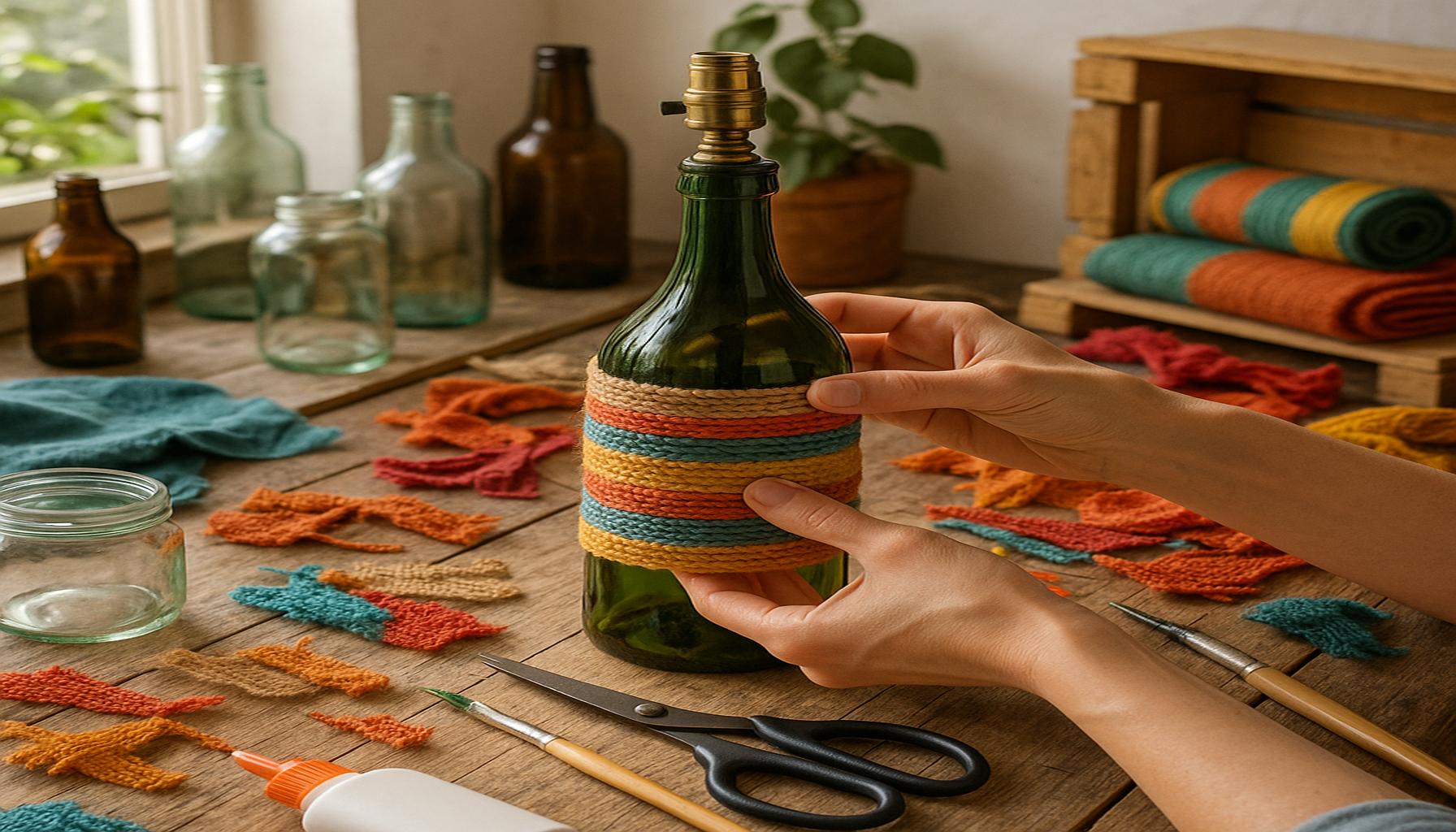Crafting as a Form of Personal Empowerment: Discovering Self-Expression Through Creation
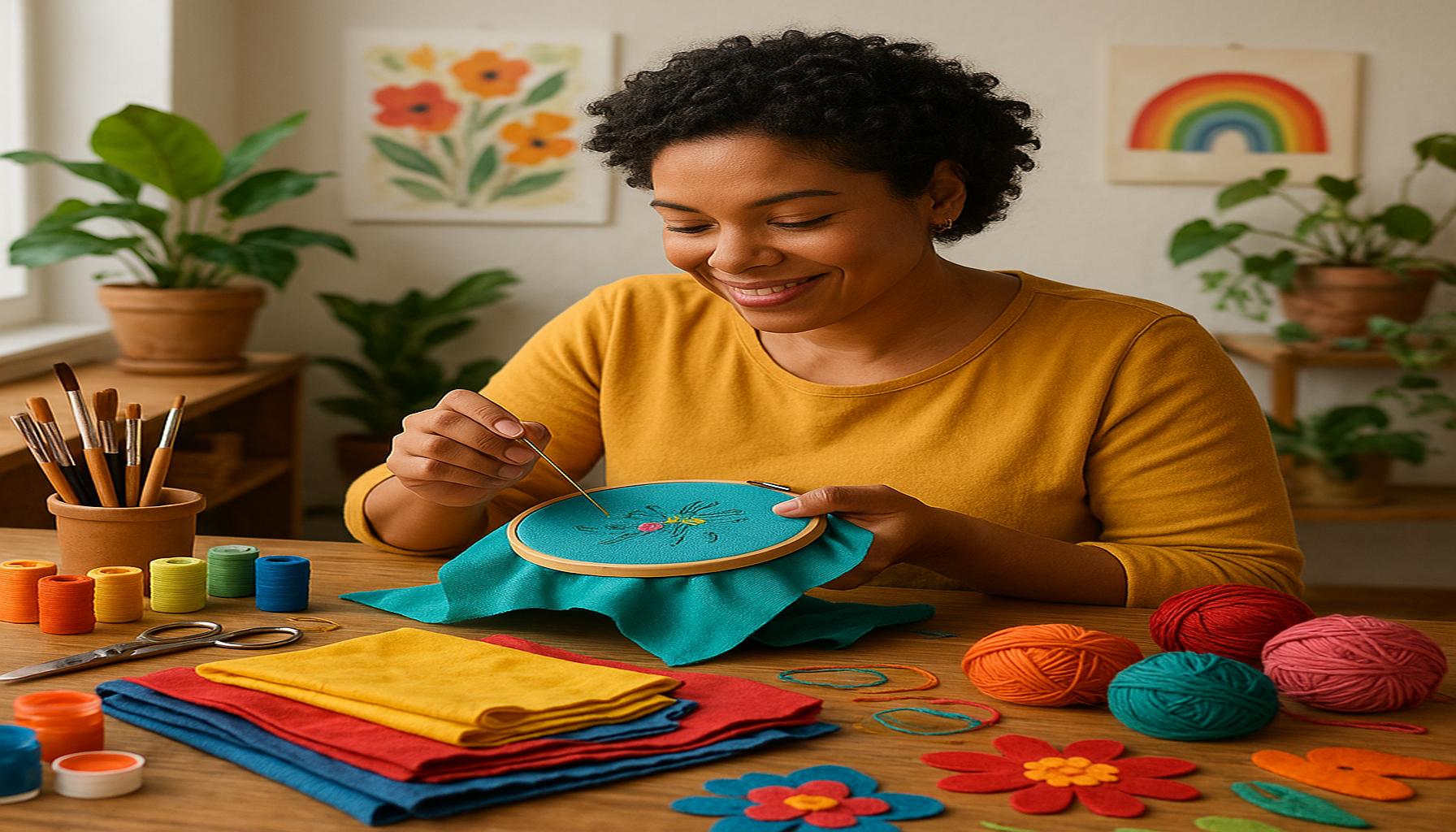
Unleashing Creativity and Confidence
In an era largely characterized by digital communication and virtual interactions, many individuals are rediscovering the art of *crafting* as a vital outlet for self-expression. This hands-on approach not only enhances creativity but also plays a significant role in personal empowerment, providing a sense of grounding in our fast-paced world.
Engaging in crafting can provide profound benefits, including:
- Stress Relief: The act of crafting can be soothing. Many find solace in the rhythmic motions of knitting or painting, which can serve as a form of meditation. Just as physical exercise releases endorphins, the creative process can alleviate stress and promote a sense of well-being.
- Boosted Self-Esteem: Completing a project—from a hand-knit scarf to a finished wooden chair—can instill a strong sense of accomplishment. Even through small victories, crafting reinforces the belief that creativity is attainable, celebrating the maker’s unique vision and effort.
- Enhanced Focus: The concentration required for crafting promotes mindfulness, drawing attention away from everyday distractions. Activities like pottery or sewing require paying attention to detail, which can help individuals practice being present in the moment.
From knitting and woodworking to scrapbooking and painting, crafting opens doors to vast possibilities for expression. This community of creators often shares techniques and tutorials online, connecting with others across the United States who share similar interests. Crafting allows individuals to explore their identities deeply—transforming simple materials into reflections of personal stories and experiences.
The tangible results of crafting can also serve as empowerment tools, often leading to:
- Community Connection: Engaging with local crafting groups or events fosters a sense of belonging. Whether in a DIY workshop or an online forum, crafters share their creations and strategies, forming friendships based around shared interests.
- Skill Development: Learning new techniques can lead to further creative pursuits. The rise of video platforms like YouTube has allowed many to discover crafting methods they may never have encountered otherwise, such as metalworking or candle making.
- Emotional Healing: Many find that crafting serves as a form of therapy, aiding in emotional processing. For some, the act of creating can be particularly beneficial during difficult times, providing an outlet to express feelings that may be hard to articulate.
This exploration of crafting reveals its potential as a powerful means of self-discovery and empowerment, encouraging individuals to embrace their creativity with confidence. As more Americans turn to crafting as an essential part of their lives, it becomes clear that this age-old practice is more relevant than ever, sparking joy and fostering resilience in a complex world.
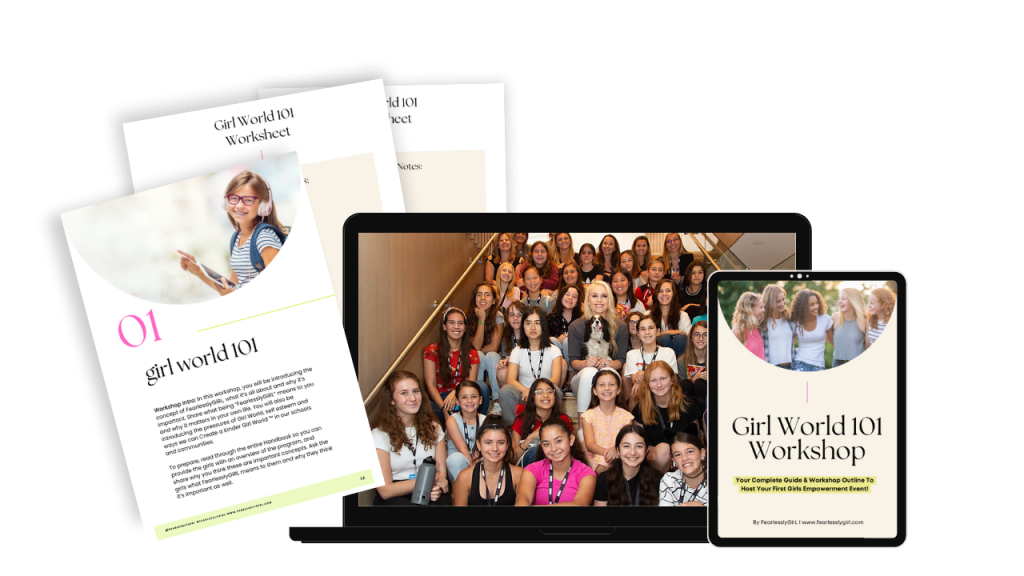
DIVE DEEPER: Click here to discover sustainable crafting ideas
Crafting as a Path to Personal Growth
Delving into the world of crafting offers individuals not just a leisure activity, but a robust framework for personal growth and empowerment. When people take up crafting, they often enter a journey that transcends the simple act of creation. This engagement with crafting provides an opportunity to develop life skills that foster confidence, resilience, and a sense of agency. The benefits are manifold and can profoundly shape an individual’s perspective.
One of the most striking advantages of crafting is its capacity to *nurture creativity*. The creative process challenges individuals to think outside the box, make spontaneous decisions, and embrace the unexpected. Whether one is learning to crochet intricate patterns or designing a piece of furniture, crafting empowers practitioners to explore their creative potential. This exploration may foster new ideas that can be applied across life’s many avenues, enhancing problem-solving skills and encouraging innovative thinking.
Moreover, engaging in crafting can also forge a connection with cultural heritage. Many crafts reflect traditions, histories, and stories unique to specific communities. By participating in these art forms, individuals not only engage with their culture but also ignite conversations about identity and shared experiences. For instance, weaving techniques from indigenous tribes or quilting styles emerging from Southern history provide insights into cultural narratives, creating a richer understanding of one’s background and that of others.
As crafting can vary greatly by region, specific projects may hold significance for different communities. Here are a few examples of popular crafting practices across the United States:
- Quilting: Often associated with community gatherings, quilting allows crafters to share stories through fabric while preserving family and cultural histories.
- Knitting and Crocheting: These activities have surged in popularity in recent years, often taking place in community groups that cultivate friendships and social networks.
- Wood Turning and Furniture Making: This hands-on craft connects makers with the earth while providing a platform for expressing artistic flair in practical projects.
- Pottery: The tactile nature of clay engages both body and mind, allowing individuals to express themselves through various forms while enhancing their dexterity and focus.
In addition to skill-building and cultural connections, crafting often aids in establishing an identity based on personal interests. The autonomy to choose materials, techniques, and final outputs can lead crafters to develop a stronger sense of self. By transforming raw components into personalized creations, they visibly manifest their thoughts and feelings, cultivating a deeper understanding of who they are and how they fit into the world around them. In this sense, each project fosters a reflection of their unique journey toward self-discovery.
Ultimately, crafting is not merely about the end product but is deeply intertwined with the process of becoming. Through the challenges and triumphs found in creativity, individuals carve out spaces for expression that can lead to lasting personal empowerment. As crafting continues to gain traction as a means of self-expression, its multifaceted role in emotional and psychological well-being remains a compelling exploration in today’s dynamic world.
Exploring Self-Expression Through Various Crafting Methods
Crafting is not merely a pastime; it is a vibrant tool for personal empowerment and self-discovery. As individuals engage in diverse crafting methods—such as knitting, painting, pottery, or woodworking—they embark on journeys that enhance their self-esteem and creativity. Each project becomes a canvas for self-expression, allowing crafters to translate their emotions, experiences, and thoughts into tangible forms.Participating in hands-on crafting activities fosters a unique mindset, where trial and error are celebrated. This process encourages resilience, as individuals learn to embrace imperfections and adapt their creations. According to various studies, the rhythmic motions of crafting activities can reduce anxiety and promote mental clarity, providing therapeutic benefits alongside personal growth.Furthermore, crafting cultivates a sense of community. Many crafters join groups or participate in workshops, connecting with like-minded individuals who share their passion for creativity. These interactions foster supportive networks that inspire and motivate participants to push beyond their limits, embracing a spirit of collaboration.
Benefits of Crafting: A Tool for Mental Well-Being
The benefits of engaging in crafting extend deep into personal well-being. Research highlights that **hands-on creation** leads to significant improvements in mood and cognitive function. When individuals immerse themselves in crafting, they often enter a state of flow—this meditative state leads to heightened focus and relaxation.Moreover, crafting nurtures a strong sense of identity. By choosing materials, colors, and techniques, individuals create pieces that reflect their unique styles and stories. This process of making allows individuals to assert their identities in a world that often imposes limitations. Whether it’s a handcrafted piece of jewelry or a painted canvas, each creation is a profound expression of the artist’s inner world.In summary, crafting serves as a dynamic avenue for **self-expression**, boosting mental well-being and providing essential tools for personal empowerment. As individuals explore and embrace the art of creation, they not only enhance their skills but also unlock their true potential.
| Advantage | Impact |
|---|---|
| Enhanced Creativity | Engaging in crafting allows individuals to express unique ideas and explore new artistic avenues. |
| Building Confidence | Crafters gain a sense of achievement through completed projects, boosting self-esteem and reinforcing their capabilities. |
Whether in solitude or in community, crafting inspires individuals to embrace their creativity, reinforce their identities, and ultimately, shape their worlds through self-expression.
DIVE DEEPER: Click here to learn more about the evolution of crafting
The Therapeutic Benefits of Crafting
As individuals navigate the complexities of modern life, crafting emerges as a powerful tool for emotional resilience and mental well-being. Engaging in creative activities can significantly reduce stress, anxiety, and feelings of loneliness. The repetitive motion involved in many crafts—be it knitting, sewing, or drawing—can achieve a meditative state that promotes a sense of calm and presence in the moment. This mindfulness not only nurtures peace but also allows individuals to process their emotions, leading to improved mental health.
Studies have shown that crafting can trigger rewards and pleasure centers in the brain, releasing endorphins and providing a natural high. For instance, a report from the Journal of Neuropsychiatry and Clinical Neurosciences highlights that engaging in creative activities can enhance mood and foster feelings of accomplishment. Such psychological benefits can be particularly crucial for those coping with depression or stress. By concentrating on a crafting project, individuals may find a temporary escape from their worries, allowing them to regroup and regain perspective.
Furthermore, crafting often provides a communal aspect, helping individuals develop support networks that are essential for emotional well-being. Community crafting groups or classes foster camaraderie among participants, breaking barriers and creating a sense of belonging. These social interactions not only strengthen existing relationships but also create opportunities to form new ones. In the United States, knitting circles, scrapbooking clubs, or pottery classes provide creative spaces where stories are shared, friendships blossom, and encouragement flows. This interconnectedness is invaluable in combating feelings of isolation that are all too common in today’s fast-paced world.
A notable example is the rise of DIY workshops across American cities, where crafting enthusiasts gather to learn new skills while enjoying shared experiences. These workshops range from macramé classes in San Francisco to pottery evenings in Nashville, catering to diverse interests and encouraging community engagement. Participants leave not only with tangible creations but often newfound friendships and a heightened sense of belonging.
Moreover, crafting serves as a vital outlet for self-expression, allowing individuals to articulate feelings and experiences that may be difficult to express verbally. The creative medium can provide a voice for the voiceless and illuminate personal narratives in profound ways. Art therapy, which often includes crafting components, is increasingly recognized as beneficial for trauma recovery. Patients use different forms of art to explore and process their experiences, offering them a pathway to healing that might not be accessible through traditional talk therapy.
Interestingly, this empowerment through crafting is not limited to adults; it extends to younger generations as well. Educational programs that incorporate crafting into the curriculum foster skills such as critical thinking and collaboration among children and teens, setting a foundation for future personal empowerment. Initiatives like the “Craft It Forward” program in schools across the country encourage students to create while also learning about community service, imbuing them with a sense of purpose and empathy.
In an era where digital distractions dominate, the tactile experience of crafting invites individuals to engage with their surroundings and themselves. The physicality of creation nurtures a deeper connection to the materials, enhancing the emotional fulfillment that accompanies crafting. This engagement with one’s creativity and resources can ignite a passion for skill development, driving personal empowerment through self-actualization and authentic expression.
DIVE DEEPER: Click here to discover the evolution of digital art
Conclusion: A Tapestry of Empowerment
In a world where the fast pace of life often leaves little room for personal reflection, crafting emerges as a transformative practice, offering a pathway to self-discovery and empowerment. Through diverse mediums, individuals can engage their creativity, unlocking a hidden reservoir of emotional depth. As explored in this article, crafting provides numerous therapeutic benefits, serving as a response to the chaos of everyday existence. The act of creating not only releases endorphins but also encourages mindfulness, allowing for emotional processing and resilience-building.
Equally essential is crafting’s role in fostering community. By bringing people together in supportive environments, crafting not only combats feelings of isolation but also nurtures new connections and friendships. The shared experiences within crafting circles cultivate a sense of belonging that is invaluable, especially in today’s disconnected society. The collective energy of creating can lift spirits and inspire collaboration, underscoring the importance of social networks in personal empowerment.
Moreover, crafting stands out as an unparalleled medium for self-expression, enabling individuals to voice their narratives and articulate feelings that may otherwise remain unspoken. This unique capacity for personal storytelling through creation contributes significantly to mental health, enhancing overall well-being. As we witness a surge in crafting initiatives—even among children through educational programs—it is clear that the benefits of crafting in promoting emotional resilience and community engagement are profound.
Ultimately, as individuals embark on their creative journeys, they not only cultivate skills but also embrace an enriching experience that fosters healing, connection, and empowerment. Whether through a simple DIY project or a collaborative workshop, crafting presents an opportunity for everyone to find their voice, ignite their passions, and connect with their authentic selves. The canvas of creativity awaits—inviting you to leave a mark of your own.
